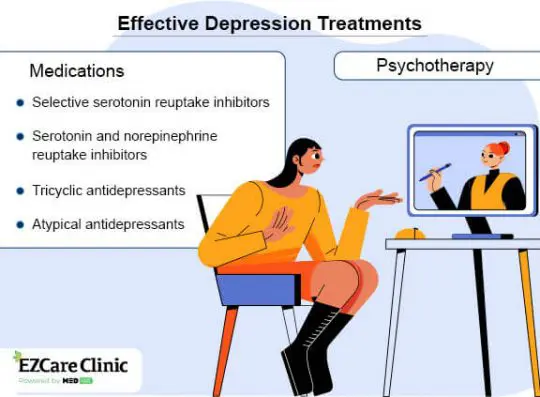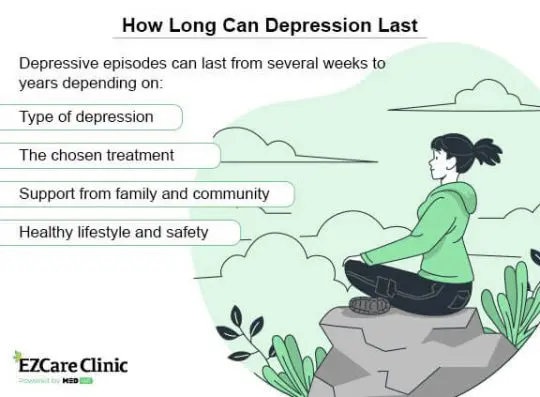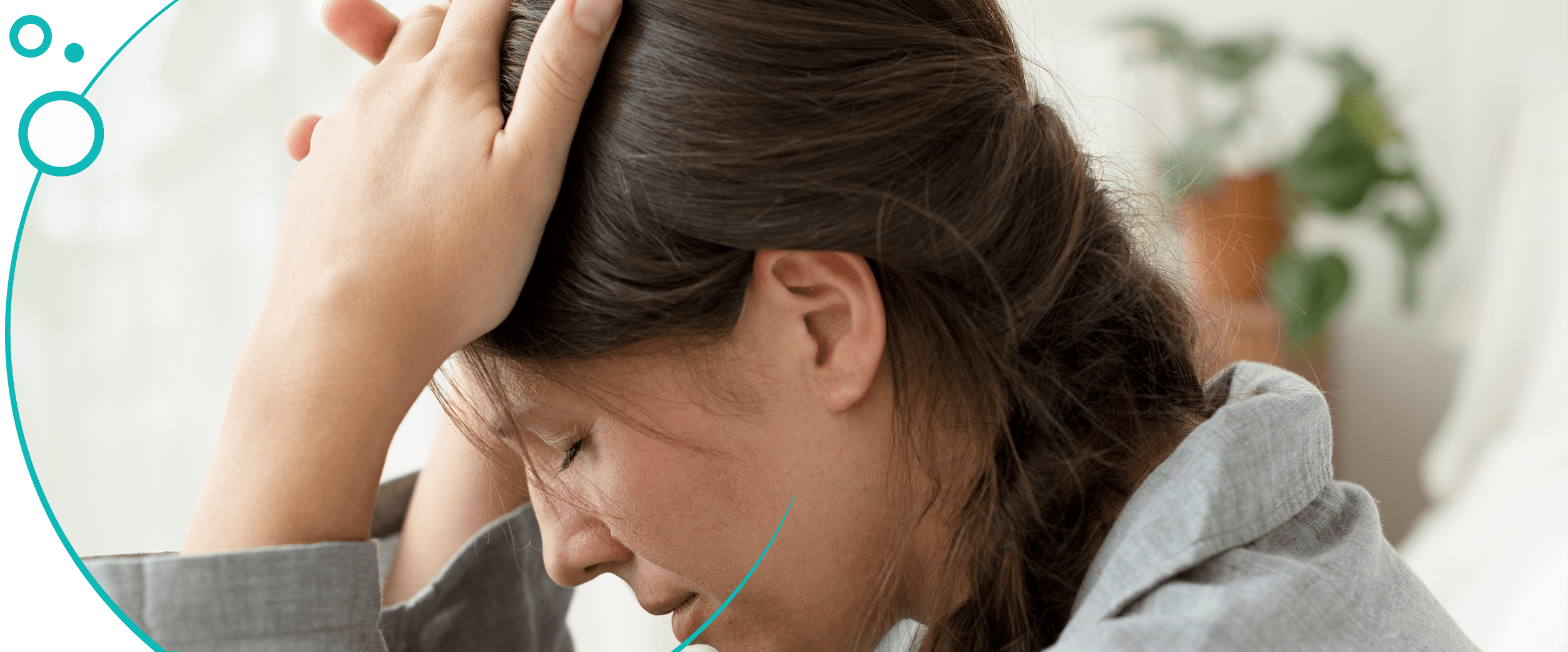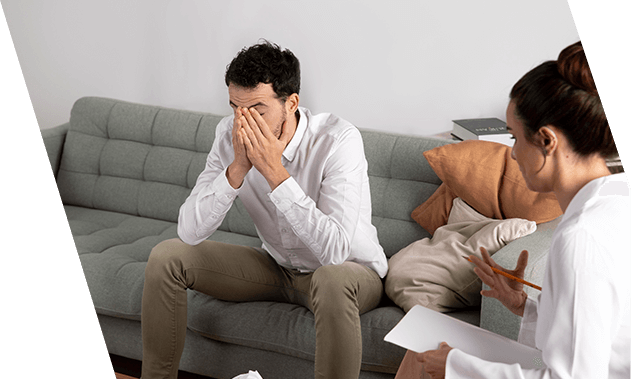For many, untreated depression can last years. Sometimes, it can even go through generations. Research indicates the primary causes of depressive disorders to be approximately 50% genetic and 50% psychological or physical.
Depression may be completely genetic or not at all. Grief – and not all losses we grieve are due to the death of a loved one – is certainly one factor. Alcohol is known to contribute to many types of depression. However, stressful life events, comorbid illnesses, and other factors can contribute to its development too. Whichever the cause is, it’s important to know that many types of depression are temporary and all are manageable.
Consult a therapist to know what could cause your depression and how to deal with it.
Common Types of Depression and Approximate Duration
How long depression lasts depends on the type of depression and the chosen course of treatment. The most typical types are usually classified as:
Major Depressive Disorder (MDD)
As with most depressive disorders, MDD won’t “go away on its own.” It’s a serious mental illness that changes how people feel and think. It negatively impacts the ability to sleep well, eat healthy foods, and enjoy life.
People experiencing MDD have depression symptoms every day.
Atypical Depression
Atypical depression is a subtype of MDD. It occurs when waves of depression cause “highs” or improved mood responses. People suffering from atypical depression seem to react strongly to environmental situations. Atypical depression often lasts longer than other types.
Persistent Depressive Disorder (PDD)
Persistent depressive disorder isn’t as severe as major depressive disorder, but it is also a continual and long-term depression. Its symptoms persist for at least 2 years or more in adults. PDD is confirmed through a professional healthcare evaluation of physical and mental health as well as lab tests.
Premenstrual Dysphoric Disorder (PMDD)
The premenstrual dysphoric disorder can occur 1-2 weeks before and can last 2-3 days after the onset of a menstrual period. PMDD is more serious than PMS (premenstrual syndrome) because its symptoms are more severe. It’s believed PMDD occurs partially because of hormonal changes and that some women are more sensitive to changes in serotonin levels occurring during the menstrual cycle. Researchers aren’t sure what other factors cause or contribute to this disorder.

Postpartum Depression (PPD)
It is believed that
Postpartum depression is more serious than “baby blues” which usually last 1-2 weeks. PPD lasts longer — often 3-6 months — and can include extreme feelings of anxiety, fears, over-exhaustion, and sadness.
Sometimes, depressive symptoms are mild but last for years. We can help you overcome prolonged depression, book a visit today.
Seasonal Affective Disorder (SAD)
It’s not uncommon for people to feel “down” as days (and sunlight) lessen every fall. However, seasonal affective disorder (SADs) is a more severe response to seasonal changes. This condition usually improves as spring days bring warmer weather and increased natural light.
SAD is more frequent among people who also suffer from major depression or experience depressive episodes.
Effective Treatments for Depression
Different types of depression are effectively treated with medications and psychotherapy. The commonly prescribed drugs include the following:
- Selective serotonin reuptake inhibitors: escitalopram (Lexapro), fluoxetine (Prozac), and sertraline (Zoloft).
- Serotonin and norepinephrine reuptake inhibitors: venlafaxine (Effexor), desvenlafaxine (Pristiq), and duloxetine (Cymbalta).
- Tricyclic antidepressants: amitriptyline (Elavil) and amoxapine (Asendin).
- Atypical antidepressants: bupropion (Wellbutrin) and mirtazapine (Remeron).

Psychotherapy of different types can also be helpful. These include:
- Cognitive-behavioral therapy
- Interpersonal therapy
- Radically open dialectical behavior therapy
Also, one can be recommended to try light therapy or take vitamin D. These extra solutions are more common among those with seasonal affective disorder.
Can Depression Be Cured?
There’s no absolute cure for depression. But with proper medical treatment, people can recover from it. In addition to talk therapy and prescribed medications, elements needed for depression recovery include:
- Community. Depression can be prolonged if there is a lack of ongoing support and healthy relationships.
- Healthy lifestyle. Prioritizing physical health aids recovery while alcohol and drug use can extend treatment indefinitely.
- Safe living environment. An unsafe living environment can exacerbate unhealthy patterns of abuse and codependency.
- Purpose. Meaningful daily activities can speed depression recovery. These can include making daily steps towards accomplishing a goal, connecting with nature, and volunteering.
Sometimes we need help managing emotions and responses in order to live a better life. When you choose to manage depression, you’ve made a plan to live stronger, live longer, and live happier. If you need help in managing your depressive symptoms, reach out to EZCare doctors and receive a personalized treatment plan during the initial appointment.
Sources
- Major Depressive Disorder. (2023)
Source link - Postpartum Depression. (2022)
Source link



